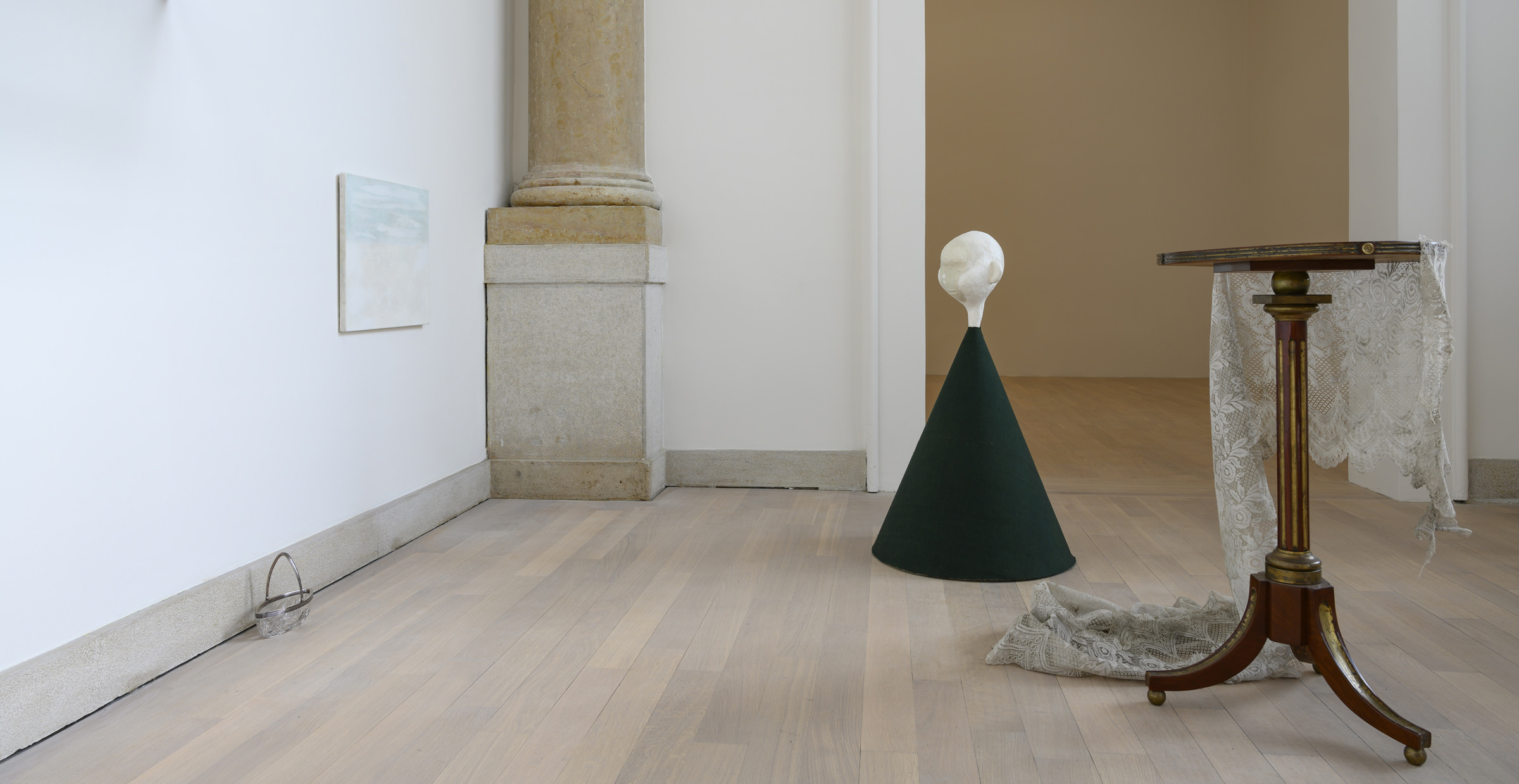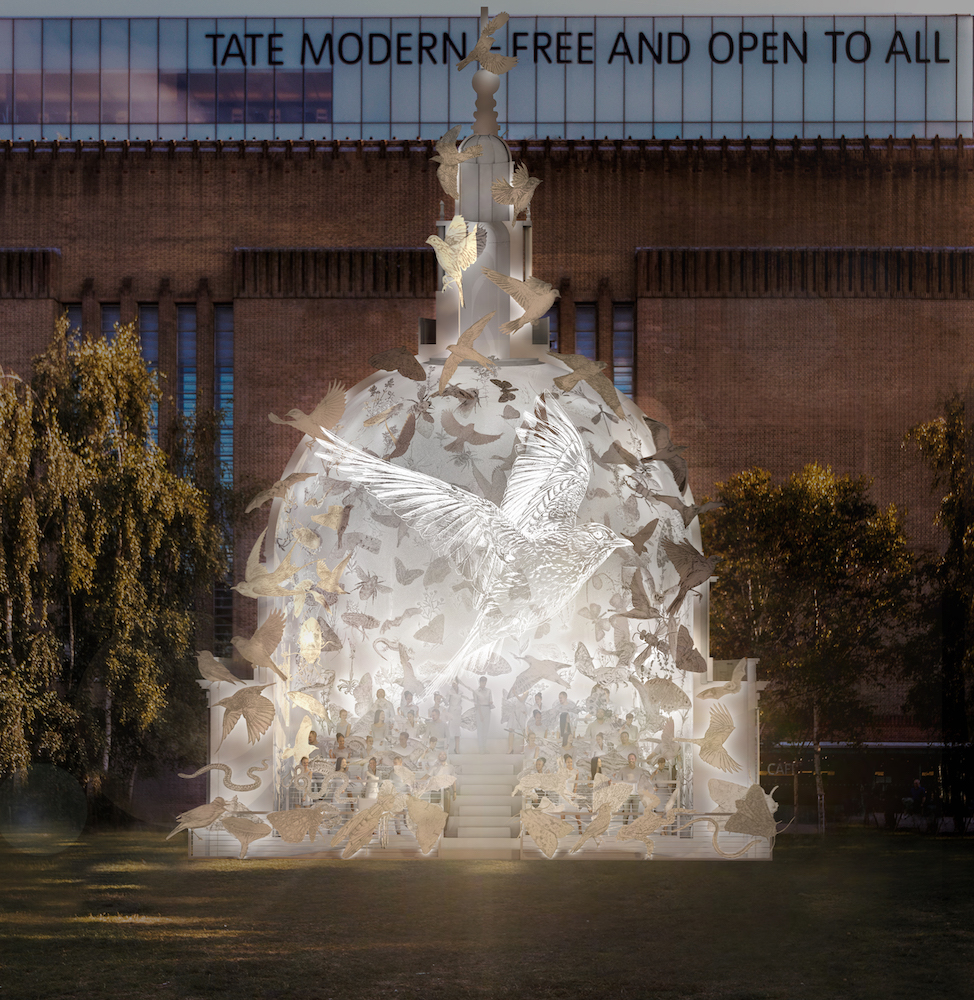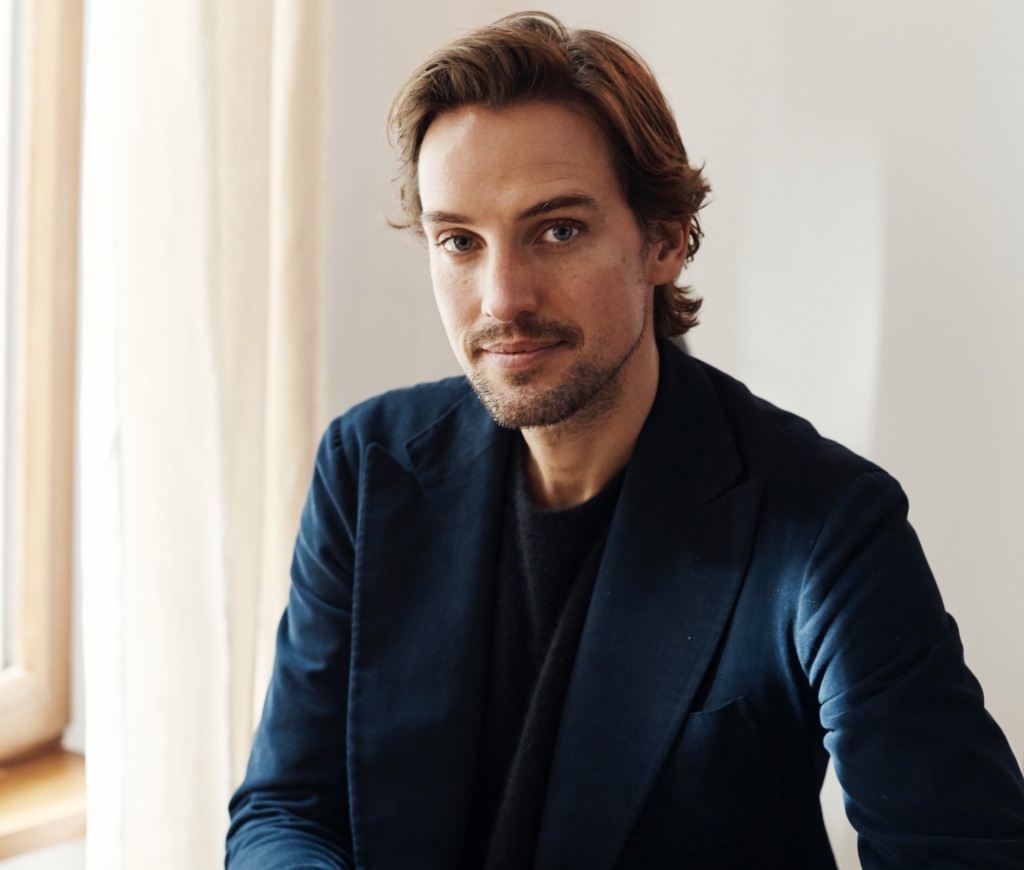The first mid-career curator to collaborate on the British Pavilion, Dr. Zoe Whitley finds tenderness in the places of loss in Cathy Wilkes’ sculptural installations.
The audience steps into the the unadorned architecture of the Britsh Pavillion at the 58th International Art Exhibition – La Biennale di Venezia, and feels the serotonin percolate as the natural light bathes them. An alter-esque table surrounded by small figures dominates the first in a series of interconnected rooms.
The humanoid sculptures (some robed, some bare) seem like placeholders for people… empty shells with swollen bellies. At the same time, they appear purposeful as if they are engaged in some ritual. The urge is to ask them what’s going on. After all, who are they? Happy expectant mothers or the evidence of something more sinister?
Continue through the exhibition and the idea of domestic interiors starts to form, detail by detail: a porcelain dish hung on the wall, a vase on the floor, a floating hand wiping dirt from a tub.
To leave, the viewer must go back the way they came. The sightlines are different, more details emerge, but no answers are given. It’s this ambiguity that fascinates Dr. Whitley.”Everything is possible,” she says, “but nothing is certain.”
Originally from Los Angelos, Dr. Whitley moved to London in 2001 from Washington D.C to attend the Royal College of Art where she earned her MA. In her former role as Curator of International Art for the Tate Modern, Dr. Whitley and her co-curators received critical acclaim for ‘Soul of a Nation’. The 2017 exhibition retracing the African American civil rights movement through the ‘60s and ‘70s. The Guardian‘s Jonathon Jones called it a “compelling show [that] put the battle for civil rights in a brutal, brilliant new light.”
Now, as the senior curator for the Hayward Gallery in London and the first mid-career curator to represent the British pavilion, Dr.Whitley works with Northern Irish artist, Cathy Wilkes to bring about something profound and mysterious at the 2019 Venice Biennale.
The British pavilion from Wilkes and Dr. Whitely is open to the public at the Venice Biennale (Giardini) May 11th—November 24th, 2019.
WHITEWALL: Dr. Whitley, this is your first time curating at the Venice Biennale, but not your first time attending in a professional capacity. Tell us about your experiences here and how they differ.
This is my first time as curator of a national pavilion and it’s been incredibly rewarding. Since 2007, I’ve delivered countless preview tours for museum patrons and in 2015 I was invited to contribute a catalog essay for my friend Candice Breitz and the South Africa pavilion.
I’ve loved these roles, but there’s nothing quite like this. There is an entirely different level of anticipation, investment and commitment on a project with this kind of international reach as the curator. It’s meant everything to me to be part of such an inspiring international community.
WW: Regarding your approach to curating you talk about ‘nurturing an idea’ can you tell us what that was like with Cathy Wilkes?
ZW: As a curator you nurture ideas. Sometimes that nurturing takes shape through the role of a translator or a collaborator; at times you are acting as an advocate. Sometimes you just stand aside and give the artist space and time to do what they need to do. It’s all about respect for the artist.
I’ve learned so much from Cathy Wilkes. She’s an artist who knows her own mind. Observing her clear-eyed resolve as the works formed in the British pavilion was to witness a complete transformation of a space I thought I knew well.
WW: What about Cathy’s work drew you in?
ZW: The melancholic poignancy of her work drew me in. It calls to mind the feeling of locking eyes with a stranger at the moment their eyes well up with tears. What city dweller hasn’t encountered this? …Or even been this person. I know I have!
There’s an unsettling mix of wanting to reach out and empathize but also of not wanting to trespass into someone else’s private moment; of being so close to considering averting your eyes when you encounter despair or a sense of isolation.
WW: The sense of space, the natural light—why are these important concepts here?
ZW: Simply put, there was a desire for people to see the shape of the work and the space around it, not the building. To help emphasize the possibility and feeling of solitude, as much architectural pretense was stripped away as possible: skirting boards were removed so as not to mask where the walls begin and the floorboards end; the floor was sanded to a more delicate shade; and most crucially, all of the lighting tracks were taken away from the ceiling so that the works are experienced in natural Venetian daylight, not in artificial light. That resolute lack of artifice and pretension is crucial to Wilkes.
WW: You talk about painterly sightlines, can you explain what this means?
ZW: We have to remember that Cathy Wilkes is both a painter and a sculptor. She’s deeply attuned to how her paintings will be experienced in three-dimensional space; how the light will hit the surface of the painting, where we as viewers might position ourselves in relation to them. She’s just as sensitive to the painterly aspects of sculpture: she composes three-dimensional objects just as you’d expect a painter to pay attention to tone and balance in a composition. The deep green of an old, folded kitchen scouring pad picks up the palette of the taffeta dress nearby. This is not an accident. It’s all painstakingly considered.
WW: The value of found object equal to the created object, how do you consider that?
ZW: There is a carefully placed two pence coin in the installation. A small object such as this one has a very specific value we can all identify. It may have a quantifiably low monetary value — we recognise it’s “worth” two pennies — but it’s crucial to know that as the artist conceives her work, hierarchy dissolves completely.
It happens throughout the exhibition: A small memento given by a friend, a charity shop purchase, a few yards of yellow satin sewn into a gathered-neck dress, the cutting from a rose bush, the trace of her hand in a dirty washing tub, or the two large canvases Wilkes hand-painted – they all have equal value to the work as a whole.
WW: How do you deal with uncertainties and open-endedness as a curator?
ZW: Yet they cannot contain every aspect of human experience. Think of what we communicate through tears; not just sadness but also unspeakable joy. We do it too, through body language. How forcefully a baby can communicate its needs before speech. I can’t tell you what anyone else thinks or why they think it, but it’s so worthwhile to pause sometimes to consider the value of silence and of emotion.
Working with Cathy has been a privilege and an education. It’s also been a challenge in that this process has literally taught me to see artworks in new ways and to question the ways we usually access art supported by words, titles and interpretive explanations that start to become repeated as certainties. I’ve learned how to find freedom in not knowing and embracing open-endedness, in not seeking foregone conclusions where there aren’t any intended.
The British pavilion from Wilkes and Dr. Whitely, commissioned by the British Council, is open to the public at the Venice Biennale (Giardini) May 11th—November 24th, 2019.









